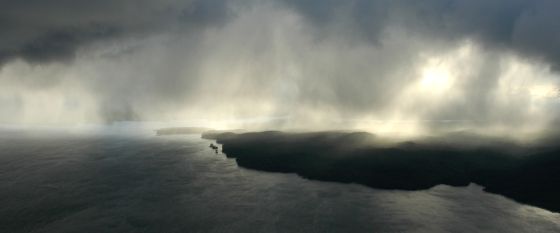MIT News reports: The largest mass extinction in the history of animal life occurred some 252 million years ago, wiping out more than 96 percent of marine species and 70 percent of life on land — including the largest insects known to have inhabited the Earth. Multiple theories have aimed to explain the cause of what’s now known as the end-Permian extinction, including an asteroid impact, massive volcanic eruptions, or a cataclysmic cascade of environmental events. But pinpointing the cause of the extinction requires better measurements of how long the extinction period lasted.
Now researchers at MIT have determined that the end-Permian extinction occurred over 60,000 years, give or take 48,000 years — practically instantaneous, from a geologic perspective. The new timescale is based on more precise dating techniques, and indicates that the most severe extinction in history may have happened more than 10 times faster than scientists had previously thought.
“We’ve got the extinction nailed in absolute time and duration,” says Sam Bowring, the Robert R. Shrock Professor of Earth and Planetary Sciences at MIT. “How do you kill 96 percent of everything that lived in the oceans in tens of thousands of years? It could be that an exceptional extinction requires an exceptional explanation.”
In addition to establishing the extinction’s duration, Bowring, graduate student Seth Burgess, and a colleague from the Nanjing Institute of Geology and Paleontology also found that, 10,000 years before the die-off, , the oceans experienced a pulse of light carbon, which likely reflects a massive addition of carbon dioxide to the atmosphere. This dramatic change may have led to widespread ocean acidification and increased sea temperatures by 10 degrees Celsius or more, killing the majority of sea life.
But what originally triggered the spike in carbon dioxide? The leading theory among geologists and paleontologists has to do with widespread, long-lasting volcanic eruptions from the Siberian Traps, a region of Russia whose steplike hills are a result of repeated eruptions of magma. To determine whether eruptions from the Siberian Traps triggered a massive increase in oceanic carbon dioxide, Burgess and Bowring are using similar dating techniques to establish a timescale for the Permian period’s volcanic eruptions that are estimated to have covered over five million cubic kilometers.
“It is clear that whatever triggered extinction must have acted very quickly,” says Burgess, the lead author of a paper that reports the results in this week’s Proceedings of the National Academy of Sciences, “fast enough to destabilize the biosphere before the majority of plant and animal life had time to adapt in an effort to survive.” [Continue reading…]
“The Earth is experiencing climate change now due to changes in the composition of the atmosphere. We think the atmosphere at the end-Permian was changed significantly by output from these volcanoes, and that the chemicals were similar to those going into the atmosphere today.” Siberia Project


